In this extract from the book Happy Teachers Change the World, Thich Nhat Hanh explains the potential impact of teachers and students learning mindfulness.
Henri was a professor of mathematics in the French school of Toronto, who, after having spent three weeks in Plum Village, went back to his school and practiced mindfulness with his students. He walked slowly and mindfully into the class, and began to write on the blackboard mindfully. His students asked him, “Dear teacher, are you sick?” He said: “No, I am not sick. I’m just practicing mindful walking. I enjoy it. I feel a lot of peace. I am very much at peace because I have learned mindfulness. Would you like me to tell you what I did in Plum Village?” And they listened.
They agreed that every fifteen minutes, a boy would clap his hands—because they did not yet have a bell of mindfulness—and everyone, including the teacher, would practice mindful breathing and relax as they sat together. They practiced stopping what they were doing and coming back to themselves in that moment by bringing all their attention to their in-breath and out-breath. This helped them to improve their capacity to learn in the classroom.
In the beginning, it was like playing a game, but the more they did it, the more it became part of their everyday lives; the whole class profited greatly from the practice of mindfulness of breathing and sitting. Transformation and healing took place, and his class made a lot of progress, becoming a very joyful kind of family. Other classes at the school followed their example, and when Henri reached the age of retirement, the administration asked him to stay for a few more years. He could focus on bringing the practice of mindfulness into the school and improve the quality of teaching and learning in the school.
Henri’s experience is possible, just by sitting and breathing, for a schoolteacher to help their students to suffer less and to be happy. You help them to generate a feeling of joy, and then later they will know how to create a feeling of joy by themselves.
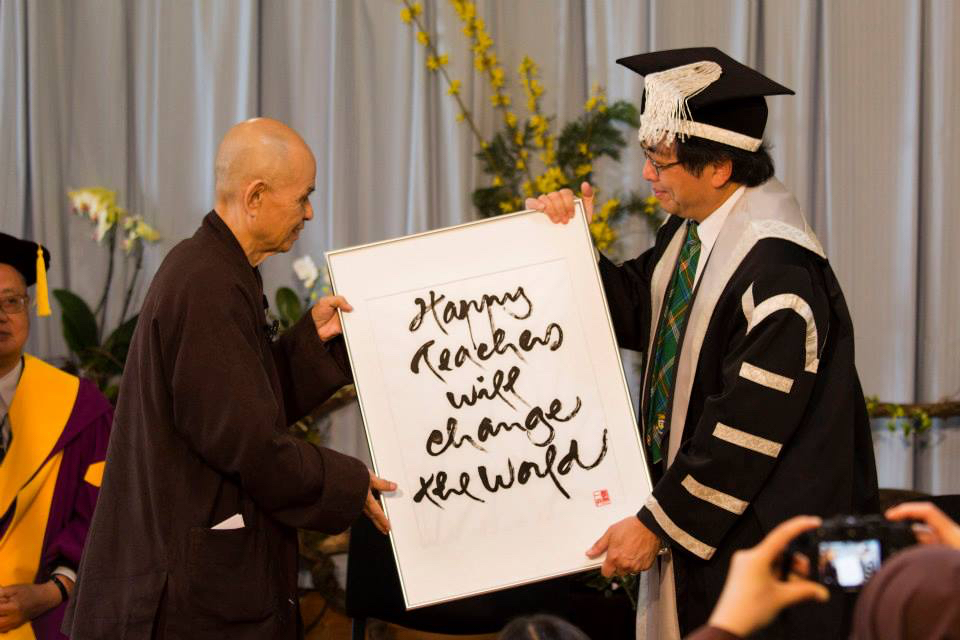
Teacher and Student Coming Back to the Present Moment
There is a radio that is going on all the time in our mind called Radio NST: Non-Stop Thinking. While sitting, we turn off that radio and enjoy every breath more deeply. Healing and nourishment take place much more easily. If you are truly focused on your breath, even for just a moment, you find you will naturally stop thinking about the past or the future, about your projects or your worries, and develop your capacity to enjoy the wonders of life in the present moment with every breath. It becomes a habit, but it takes some training, like when you learn to play ping-pong or tennis. With practice, you get in the habit of enjoying your breathing while sitting.
During sitting meditation, then, we stop speaking and we calm our body and mind. We don’t allow ourselves to be carried away by our thinking. Letting go of our thinking about the past or the future, coming back to the present moment, is very helpful. It is this thinking that removes you from the here and the now. If you are caught in your thinking all the time, you get tired and are not capable of being present.
The philosopher René Descartes said: “I think, therefore I am.” But I don’t agree: “I think, therefore I am not there—I am not really there to touch the wonders of life”; when I’m carried away by my thinking, I can’t really be present. Sometimes thinking is productive, but sometimes it can take us away from the experience of being with who is there and what is happening in the here and now. You can naturally calm your thoughts if you focus your attention fully on your in-breath and your out-breath. You observe a kind of silence that is very eloquent and powerful, that allows you to be fully alive and present to enjoy every moment, every breath. This silence is not oppressive at all. It’s very alive. When we stop our talking and calm our thinking and breathe, we become alive again, and aware of what is happening inside and around us. We can describe the silence as “thundering silence”—as powerful as thunder. When we all sit and breathe together like that we can generate a very powerful collective energy that will penetrate into everyone in the classroom, and help with healing and transformation.
The mind is like a river and thoughts are drops of water succeeding each other in a stream. To meditate is to sit beside the river of the mind and recognize every thought as it arises. You may like to practice with each one of these lines for two or three breaths while sitting:
Aware of my in-breath, I breathe in; aware of my out-breath, I breathe out. Following my in-breath, I breathe in; following my out-breath, I breathe out. Aware of my body, I breathe in; aware of my body I breathe out. Calming my body, I breathe in; calming my body, I breathe out. Generating joy, I breathe in; generating joy I breathe out. Generating happiness, I breathe in; generating happiness I breathe out. Aware of a painful feeling or emotion I breathe in; aware of a painful feeling or emotion I breathe out. Calming the painful feeling or emotion I breathe in; calming the painful feeling or emotion I breathe out.
Suppose one thousand students are sitting still during a school assembly and practicing mindful breathing to calm their body and release tension with a guided meditation like this! The children in that group will feel a powerful energy that can help them to become calm and to feel happy. A child who finds himself or herself with a group of people in school who can generate the energy of love and understanding will have more chance to transform his or her suffering. A collective energy of peace, generated by mindfulness, is the answer.
You can find out more about bringing Plum Village mindfulness practice to educators on the Wake Up Schools website.



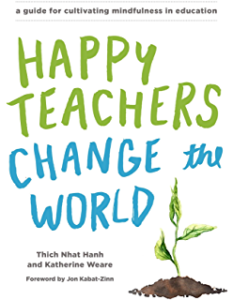

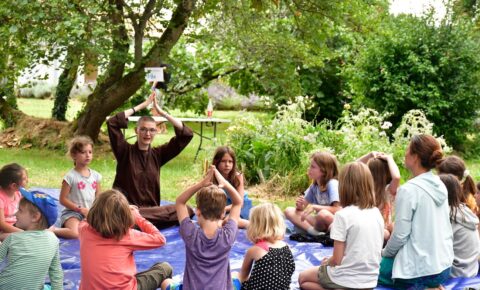
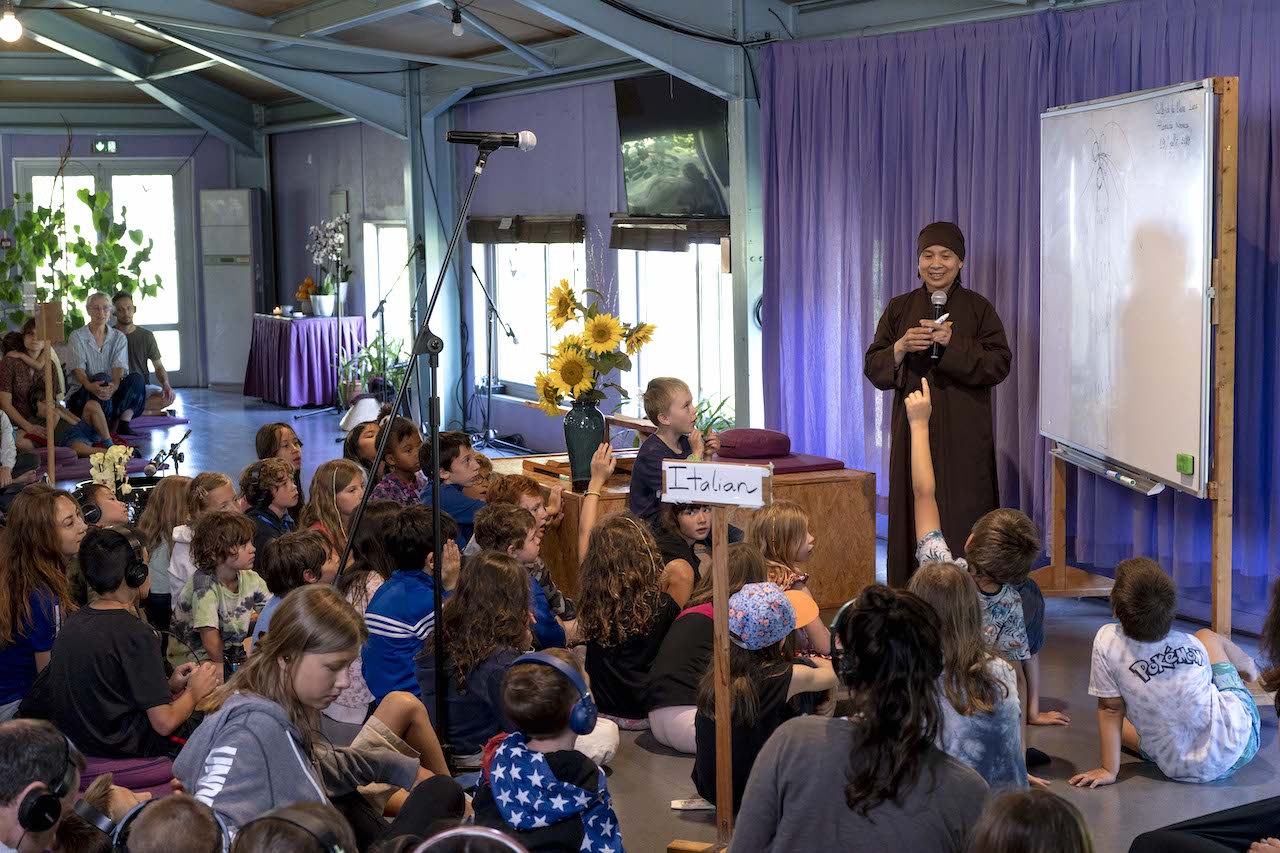
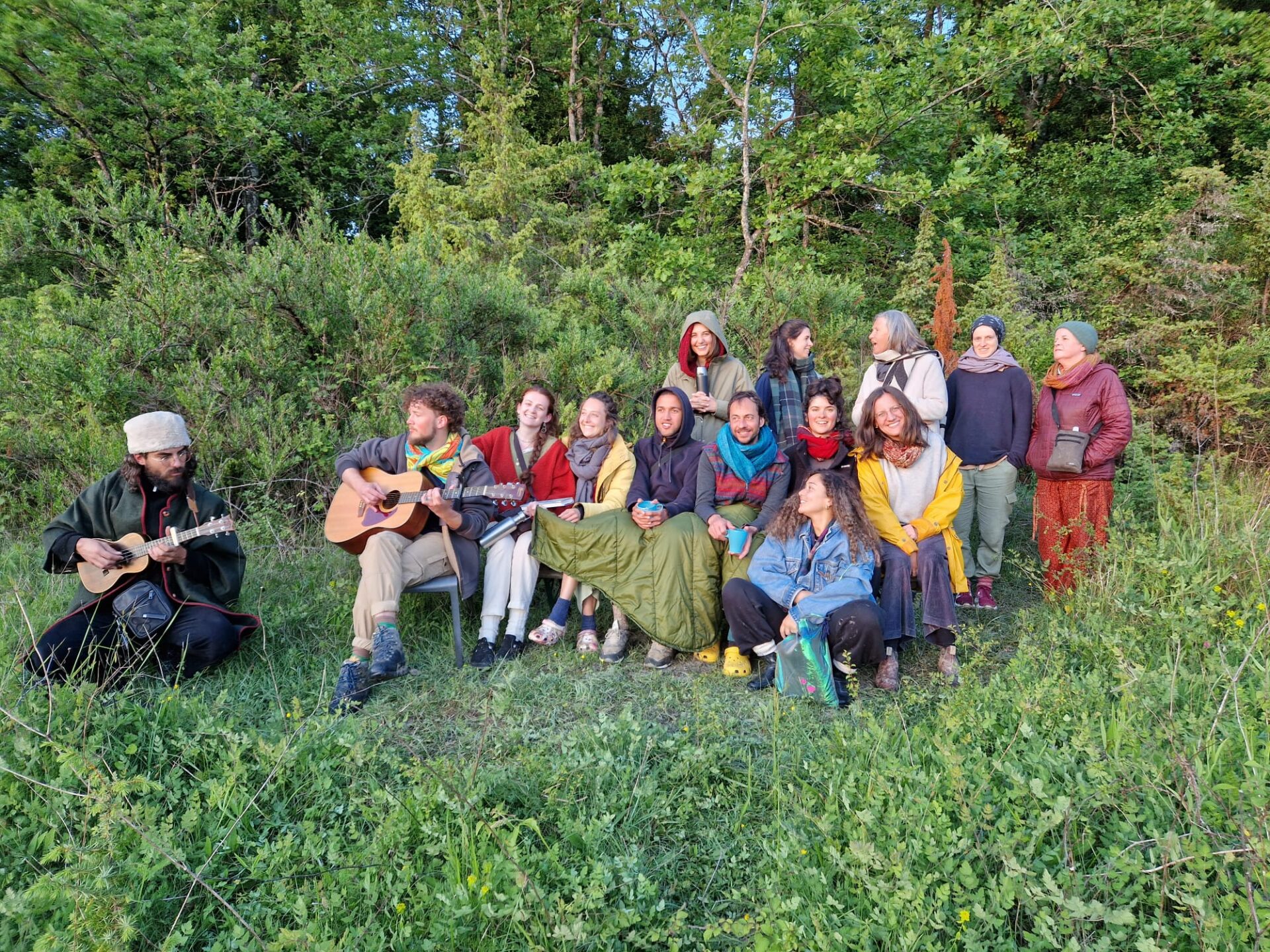
Join the conversation